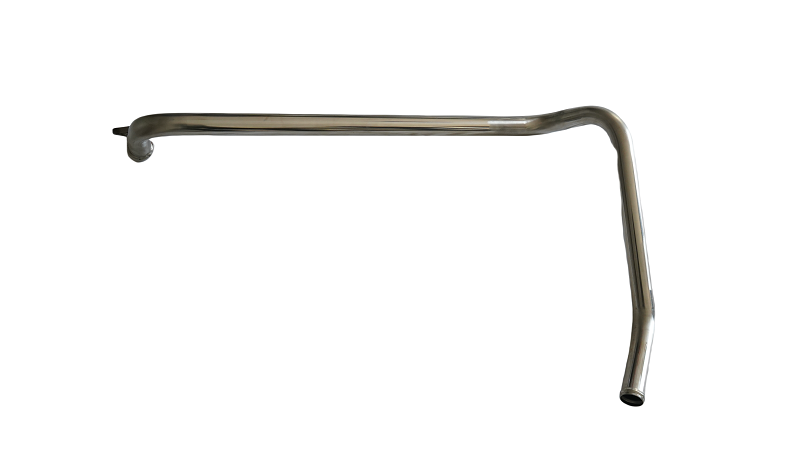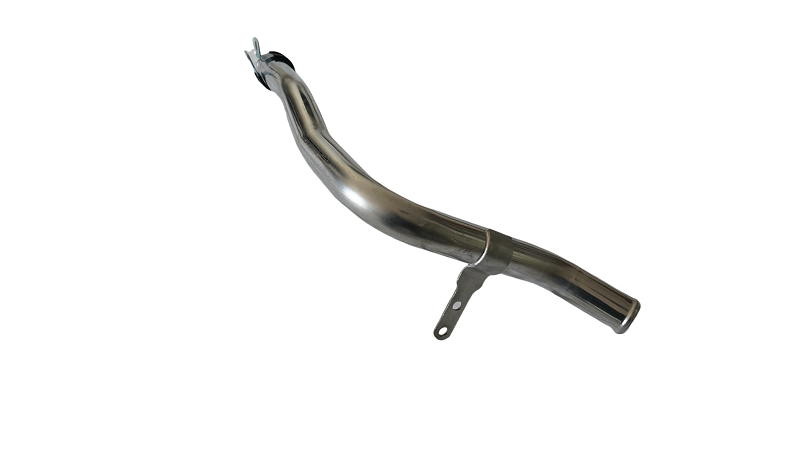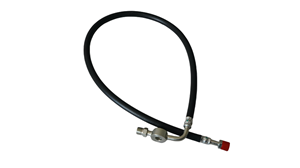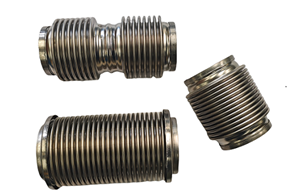Fuel Inlet Pipe For Automobile

In terms of structural design, it is precisely manufactured, and the pipe diameter is determined by strict fluid mechanics calculations based on engine parameters and working conditions. The fuel inlet pipe for automobile can accurately adapt to the fuel injection volume of different engines. It is cleverly designed into a specific curved shape to adapt to the layout of the engine compartment. The connection part uses a high-precision sealing interface to ensure the sealing and pressure stability of the entire oil inlet system. It has excellent performance, the inner wall is precisely polished and smooth, which reduces the friction resistance of fuel transportation, improves the atomization and accuracy of fuel injection, and thus improves the engine combustion efficiency, power output and reduces fuel consumption. It can also remain stable at high temperatures, has good anti-fatigue performance, extends service life, reduces the number of engine maintenance, and improves vehicle reliability.
The Fuel Inlet Pipe is an indispensable component in modern automotive fuel delivery systems, acting as the critical bridge between the fuel tank and the engine. Specifically, the Automobile Stainless Steel Fuel Inlet Pipe stands out for its exceptional durability, precision, and reliability, ensuring seamless fuel transfer under diverse operating conditions. Designed to meet the rigorous demands of internal combustion engines, hybrid systems, and advanced fuel-injection technologies, this component plays a pivotal role in maintaining engine efficiency, reducing emissions, and enhancing vehicle longevity.
At its core, the Automobile Stainless Steel Fuel Inlet Pipe is engineered to deliver fuel with unwavering consistency. As the engine operates, it requires a precise mixture of air and fuel to maintain combustion efficiency. The Fuel Inlet Pipe ensures that fuel flows smoothly from the tank to the fuel rail or carburetor, even under high-pressure conditions common in direct-injection systems. Stainless steel, as the material of choice, offers unparalleled advantages: it resists corrosion from ethanol-blended fuels, withstands extreme temperatures (-40°C to +300°C), and prevents particulate contamination that could clog injectors or damage sensitive components.
The structural design of the Automobile Stainless Steel Fuel Inlet Pipe further enhances its performance. Precision-welded seams eliminate leakage risks, while mandrel-bent tubing maintains consistent inner diameters to avoid turbulence or pressure drops. Advanced models incorporate flared ends with ISO-standard fittings to ensure airtight connections to fuel pumps, filters, and injection systems. This meticulous engineering prevents vapor lock—a common issue in high-heat environments—by maintaining stable fuel flow rates, even during prolonged idling or aggressive acceleration.
In turbocharged or high-performance engines, the Fuel Inlet Pipe faces additional challenges, such as exposure to elevated underhood temperatures and vibrational stresses. Here, stainless steel’s inherent rigidity and fatigue resistance prove invaluable. The Automobile Stainless Steel Fuel Inlet Pipe is often reinforced with laser-etched identification marks for traceability and coated with heat-resistant ceramics or polymers in extreme applications. These features ensure compliance with automotive OEM specifications and aftermarket performance upgrades.
Environmental and regulatory factors also drive the adoption of stainless steel in Fuel Inlet Pipe systems. With global emissions standards tightening, fuel systems must minimize evaporative losses. The Automobile Stainless Steel Fuel Inlet Pipe achieves this through its non-porous surface, which blocks hydrocarbon permeation—a common issue with rubber or plastic alternatives. Additionally, its 100% recyclability aligns with circular economy initiatives, reducing the automotive industry’s environmental footprint.
Maintenance and safety are equally critical considerations. Unlike traditional materials, stainless steel resists degradation from UV exposure, road salts, and chemical additives, extending service intervals to over 150,000 miles in many cases. The Fuel Inlet Pipe’s robust construction also mitigates fire risks, as stainless steel does not combust or melt under typical engine bay conditions. For technicians, standardized mounting brackets and tool-free inspection ports simplify installation and diagnostics, reducing downtime during repairs.
Innovations in the Automobile Stainless Steel Fuel Inlet Pipe continue to evolve. For electric vehicles with range-extender engines or hydrogen fuel cell vehicles, manufacturers are developing hybrid designs that integrate stainless steel with composite materials for weight reduction without sacrificing integrity. Smart sensors embedded in the Fuel Inlet Pipe can now monitor real-time fuel pressure, temperature, and flow rates, transmitting data to vehicle ECUs for predictive maintenance alerts.











